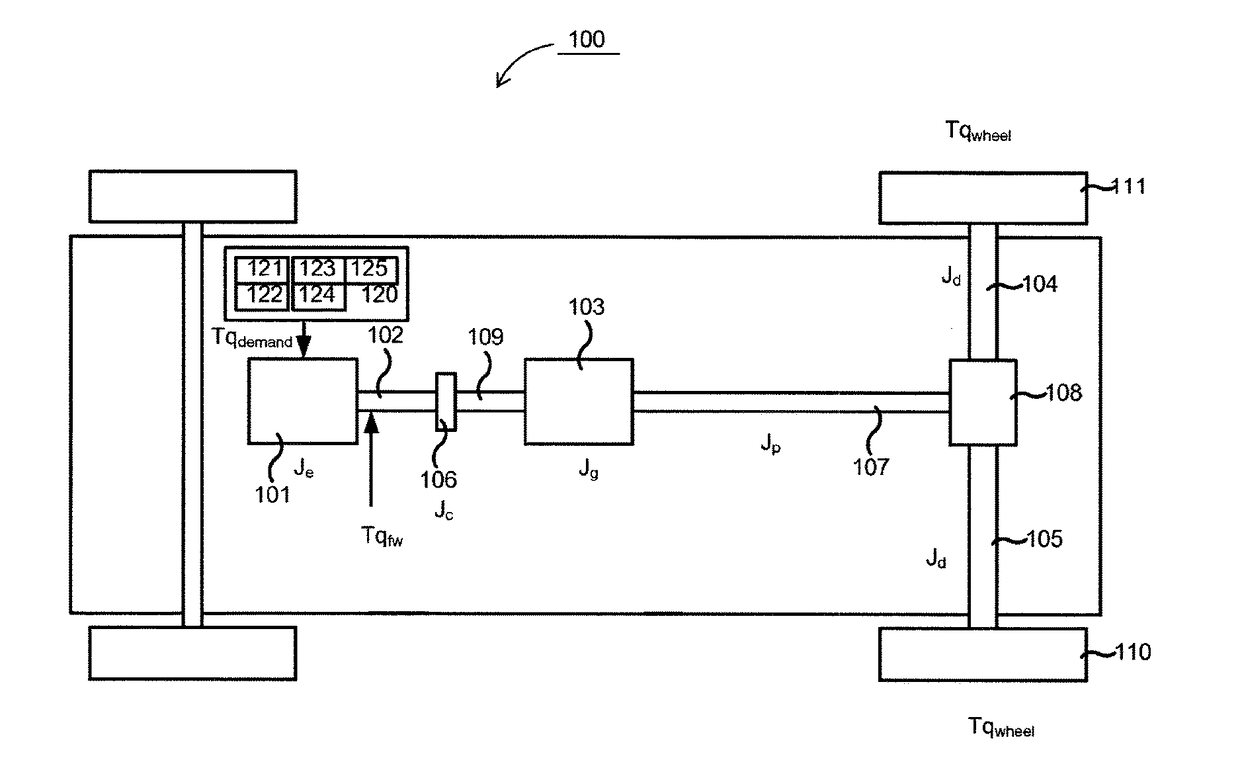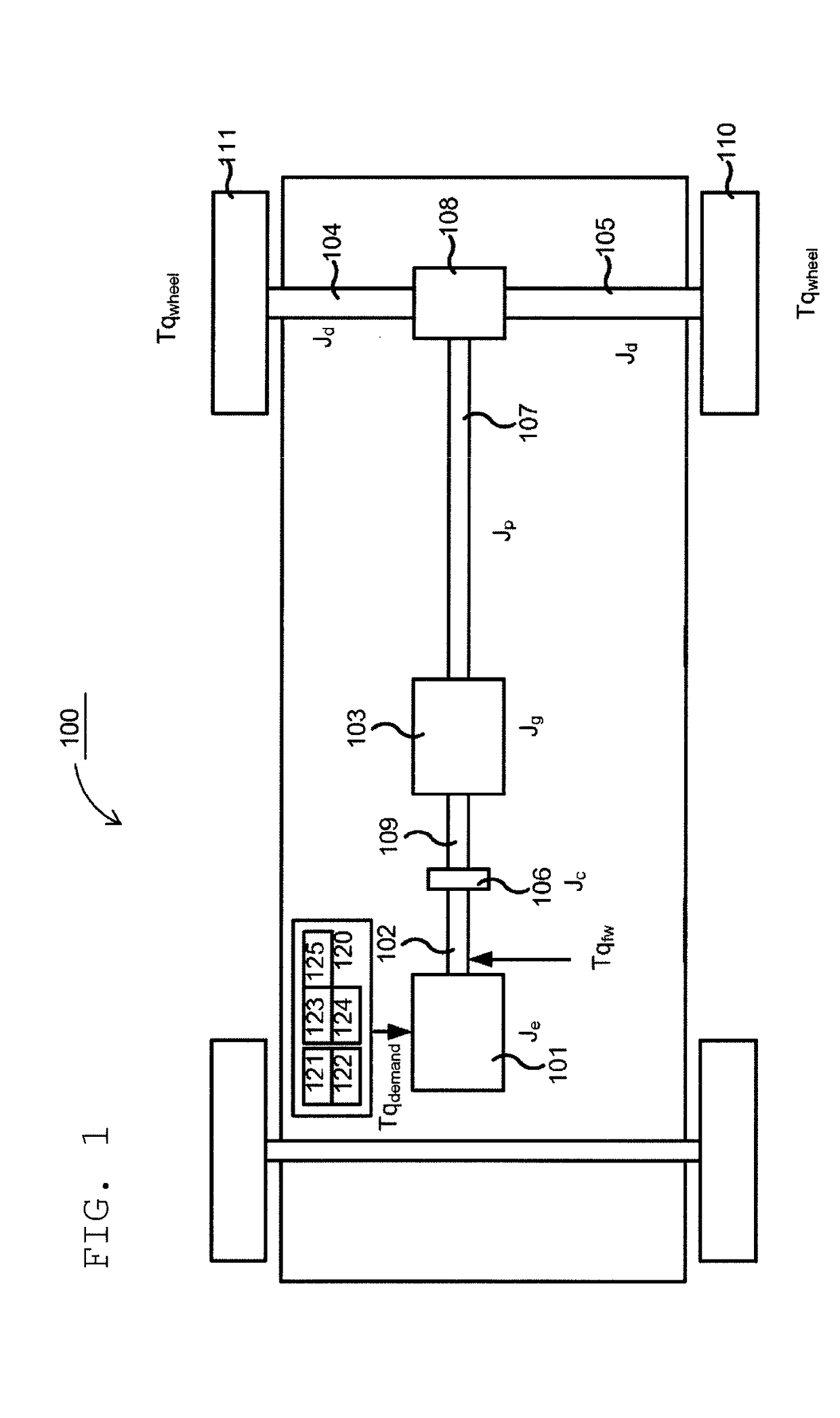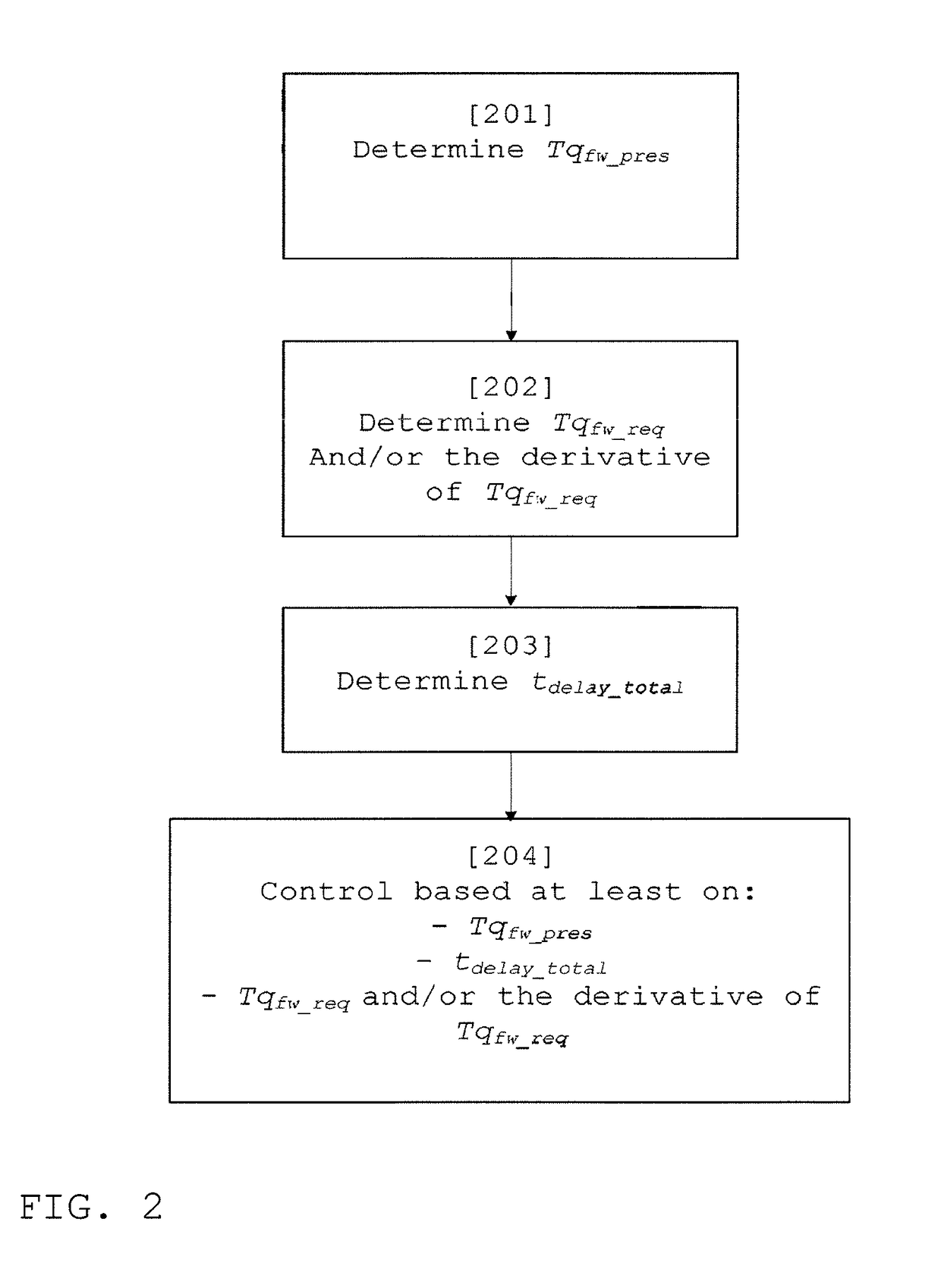Control of a torque demanded from an engine
a technology of torque and engine, applied in the direction of electric control, machines/engines, braking systems, etc., can solve the problems of introducing a limit on the way the torque may be requested from the engine in the vehicle, and affecting the driving experience of the vehicle. , to achieve the effect of reducing the amplitude and affecting the comfort of the vehicl
- Summary
- Abstract
- Description
- Claims
- Application Information
AI Technical Summary
Benefits of technology
Problems solved by technology
Method used
Image
Examples
Embodiment Construction
[0025]FIG. 1 schematically shows a heavy example vehicle 100, such as a truck, a bus or similar, which will be used to explain the present invention. The present invention is, however, not limited to use in heavy goods vehicles, but may also be used in lighter vehicles such as cars. The vehicle 100 shown schematically in FIG. 1 comprises a pair of driving wheels 110, 111. The vehicle furthermore comprises a powertrain with an engine 101, which may be for example a combustion engine, an electrical motor or a combination of these, a so called hybrid. The engine 101 may, for example, in a customary fashion, via an output shaft 102 on the engine 101, be connected with a gearbox 103, possibly via a clutch 106 and an input shaft 109 connected to the gearbox 103. An output shaft 107 from the gearbox 103, also known as a propeller shaft, drives the driving wheels 110, 111 via a final gear 108, such as e.g. a customary differential, and drive shafts 104, 105 connected with said final gear 10...
PUM
 Login to View More
Login to View More Abstract
Description
Claims
Application Information
 Login to View More
Login to View More - R&D
- Intellectual Property
- Life Sciences
- Materials
- Tech Scout
- Unparalleled Data Quality
- Higher Quality Content
- 60% Fewer Hallucinations
Browse by: Latest US Patents, China's latest patents, Technical Efficacy Thesaurus, Application Domain, Technology Topic, Popular Technical Reports.
© 2025 PatSnap. All rights reserved.Legal|Privacy policy|Modern Slavery Act Transparency Statement|Sitemap|About US| Contact US: help@patsnap.com



